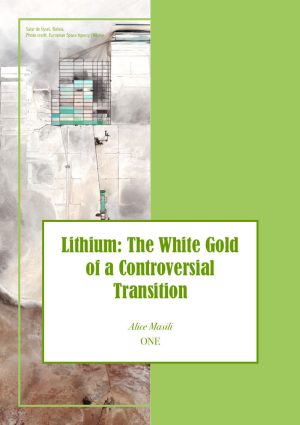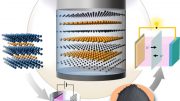 Imagine a metal so light that it floats on water yet so powerful that it could fuel our society’s future. Once a relatively obscure element, lithium is now at the heart of the global energy transition. Thanks to its ability to store large amounts of energy in small spaces, this alkali metal has become the beating heart of the batteries that power our smartphones, laptops, and electric vehicles. As demand for clean energy surges, so does demand for lithium.
Imagine a metal so light that it floats on water yet so powerful that it could fuel our society’s future. Once a relatively obscure element, lithium is now at the heart of the global energy transition. Thanks to its ability to store large amounts of energy in small spaces, this alkali metal has become the beating heart of the batteries that power our smartphones, laptops, and electric vehicles. As demand for clean energy surges, so does demand for lithium.
This has led to a dramatic price increase, transforming lithium into a precious commodity often dubbed the “white gold” of the 21st century. However, this boom comes with significant environmental costs. Traditional lithium mining methods, such as brine evaporation and rock mining, can deplete water resources, damage ecosystems, and release pollutants.
The first method is the most common and involves evaporating water from salt basins, such as the Salar de Atacama in Chile, the Salar de Uyuni in Bolivia, and the Argentine salt flats. The process is relatively simple and low-cost, but it requires a lot of water. This has a huge impact on aquatic ecosystems, increases the risk of groundwater contamination, and exacerbates the water scarcity of already arid areas.
Rock extraction uses traditional mining processes, which involve crushing and grinding the rock to release the mineral. Subsequently, lithium is separated from the other minerals through chemical processes. This more complex and costly method produces more waste but allows for greater control over the environmental impact. The choice of extraction method depends on various factors, including the availability of resources, production costs, environmental regulations, and market demands.
The growing demand for lithium is, however, pushing research towards the development of more sustainable and less impactful extraction methods. Among the emerging new technologies, we find direct extraction, which allows lithium to be extracted directly from brine without resorting to evaporation. Another path involves recovering lithium from spent batteries, thus reducing dependence on new extractions. However, the recycling of lithium batteries still has to overcome some challenges. One is related to the complexity of batteries’ chemical composition, which makes the recycling process difficult and more expensive than extracting new raw materials.
Furthermore, sufficiently developed recycling infrastructures are still needed to manage the large volumes of spent batteries. To diversify supply and reduce dependence on conventional resources, new, less traditional sources of lithium are being explored, such as geothermal waters and submarine muds. Unfortunately, lithium is present in very low concentrations in these sources. Overcoming the technical and economic challenges requires significant investments in research and development and collaboration between industry, academia, and governments.
Geopolitical tensions are also emerging as countries jockey for control of lithium resources. China dominates the lithium supply chain, raising concerns about potential supply disruptions and economic dependence. In recent years, other countries such as Argentina, Bolivia, and the Democratic Republic of Congo have increased their production, helping to diversify the global supply. This race to secure lithium supplies has prompted the European Union to recognize its strategic importance and introduce policies to secure domestic supplies and reduce reliance on imports.
In particular, the EU approved a new law called the Critical Raw Materials Act (CRMA) to ensure a secure and sustainable supply of critical raw materials such as lithium. In addition to aiming to reduce dependence on a single country of origin for each critical raw material, the law promotes the extraction and processing of critical raw materials within the European Union. The objective is to make the EU more autonomous from imports and to guarantee energy and industrial security.
However, its implementation will require significant investment and close cooperation between European institutions, Member States, and businesses. It has recently been reported that France is developing Europe’s largest lithium extraction project. Studies carried out by the company Imerys since 2015 have confirmed the presence of a significant deposit under the Kaolins de Beauvoir site in Allier in the central French region of Auvergne-Rhône-Alpes. From this comes the EMILI project (for Exploitation of MIca Lithiniferous by Imerys), developed by the French mining company Imerys.
The project is expected to produce enough lithium to power 700,000 electric vehicles per year. However, this project raises several concerns, including the environmental impact, particularly on water use and biodiversity. In addition, local communities fear negative consequences for agriculture and tourism. Despite the criticism, the French government consider this project strategic for the energy transition and European autonomy. Despite government policies promoting battery extraction and recycling through regulations and economic incentives, the high cost of lithium remains a challenge for the diffusion of electric vehicles and energy storage technologies. The cost of lithium is uncertain and depends on numerous factors.
Some analysts predict a stabilization of prices in the medium term, thanks to increased production and the development of new technologies. Others fear a new price surge in the event of an exponential growth in the demand for electric vehicles. A price too high could slow the transition towards a low-carbon economy. While lithium offers a promising path toward a cleaner energy future, it’s clear that challenges remain. Balancing economic growth with environmental sustainability will be crucial in shaping the future of this critical resource. As the world transitions to a low-carbon economy, the story of lithium will continue to unfold, with significant implications for industry and society.
Alice Masili





